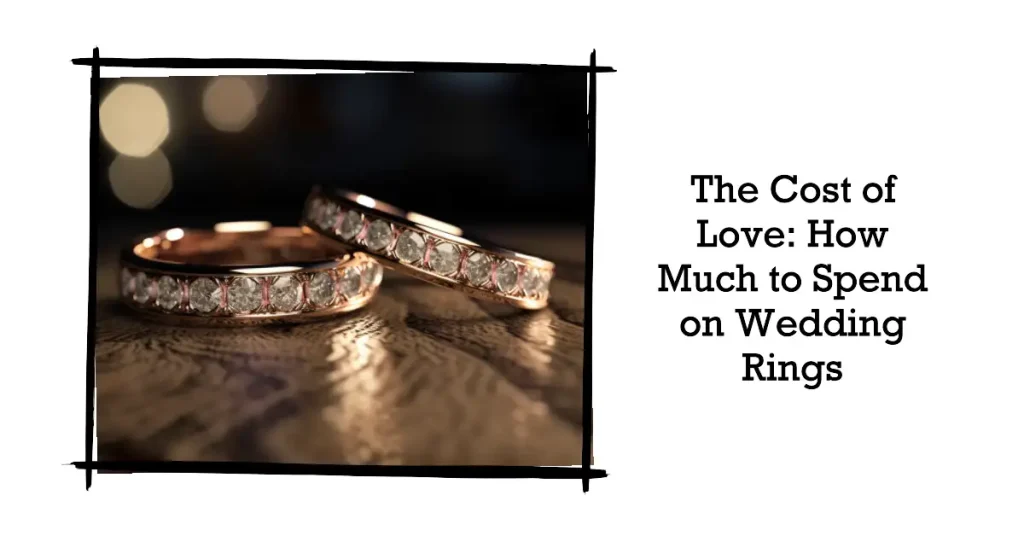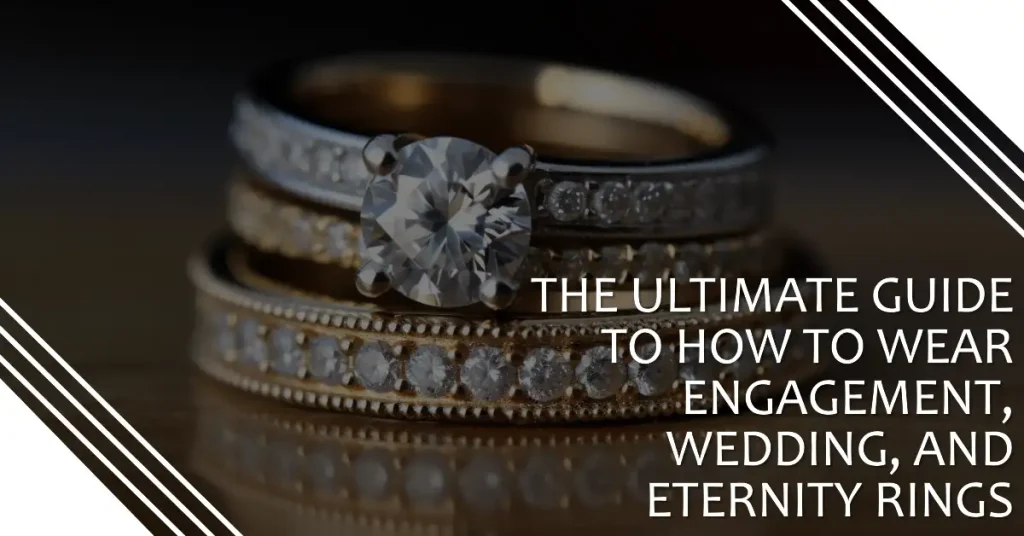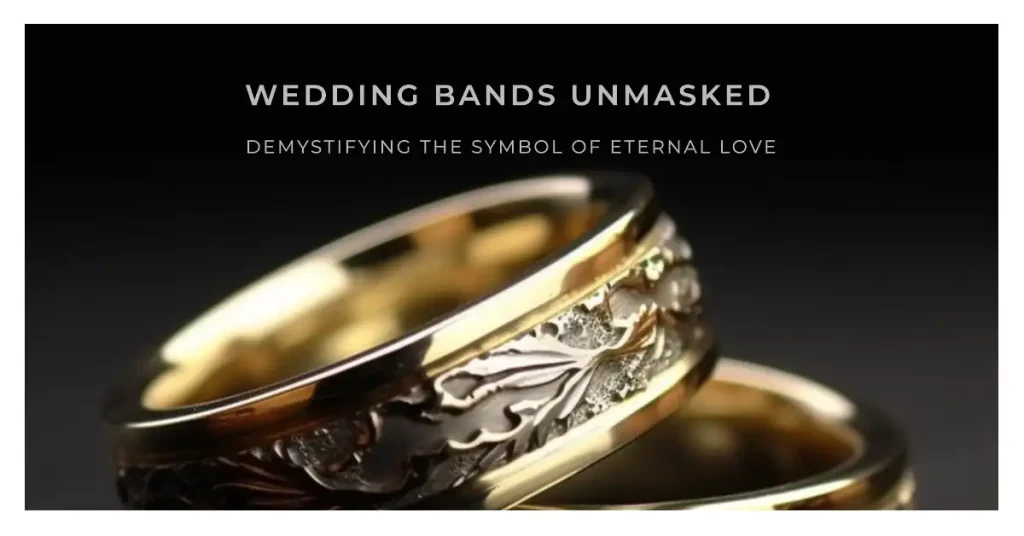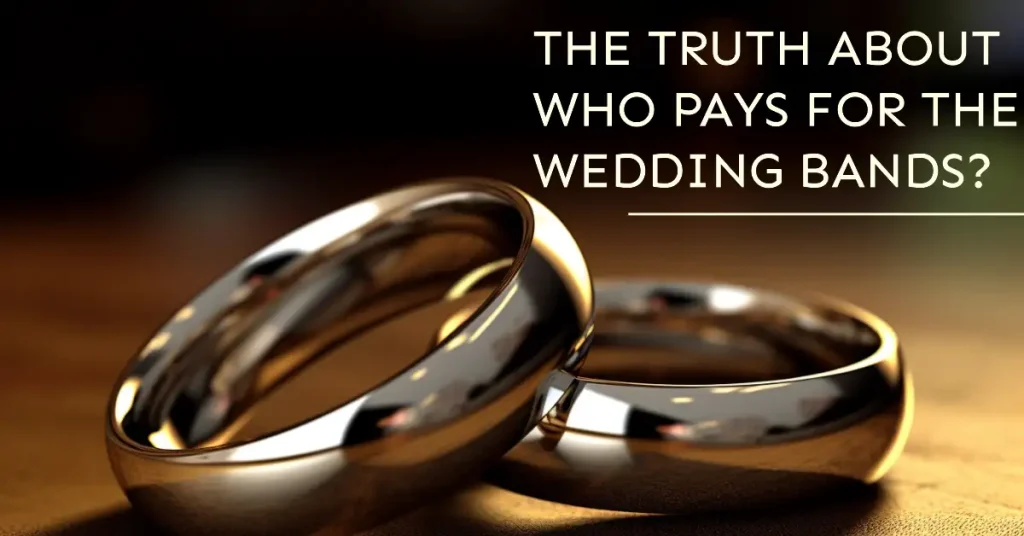Table of Contents
To clean your wedding ring at home, create a soapy solution using warm water and mild dish soap or jewelry cleaner. Soak the ring for 15-20 minutes, gently scrub it with a soft-bristle toothbrush, rinse thoroughly, and dry with a soft, lint-free cloth.
Your wedding ring is more than just a piece of jewelry; it’s a symbol of love, commitment, and the enduring bond you share with your significant other. However, although over time it may lose some of its sparkle, this is a natural process, and the good news is that there’s a solution right at your fingertips.
The Science Behind the Sparkle
Have you ever paused to appreciate the captivating radiance of your wedding ring, especially when it catches the sunlight just right? It’s not magic, but a fascinating interplay of light and material, an enchanting dance between physics and aesthetics.
- Carter, Lisa (Author)
- English (Publication Language)
- 107 Pages - 04/06/2024 (Publication Date) - Independently published (Publisher)
At the heart of this spectacle lies the principle of reflection and refraction. When light rays hit the surface of your ring or its gemstone, some rays bounce off, a phenomenon known as reflection. The angle at which the light hits the surface determines the angle at which it reflects, and this gives your ring its gleam under the light.
However, not all light reflects off the surface. Some rays penetrate the material, bending as they pass through – this is known as refraction. In a diamond, for example, the refractive index is particularly high, which means light slows dramatically and bends sharply when it enters the stone. This bending disperses the light into its component colors, creating a sparkling effect known as fire.
The cut of your gemstone further impacts its brilliance. Precisely cut facets work like tiny mirrors, reflecting and refracting light within the stone before bouncing it back to your eyes in a dazzling display. If cut correctly, a gemstone can reflect most of the light that enters it, maximizing its sparkle.
Yet, the mesmerizing twinkle of your wedding ring can diminish over time. The culprits? Everyday dirt, dust, and oils from your skin. These particles adhere to the surface of your ring and its stone, impeding the path of light and dulling the sparkle. Imagine a window smeared with grime; the sunlight can’t pass through as freely, can it? The same principle applies to your ring.
But don’t despair. This loss of sparkle isn’t permanent. With the right care, including regular and careful cleaning, you can remove this buildup, clearing the path for light once more. With each clean, you’re not just maintaining your ring; you’re reinvigorating the captivating dance of light that makes it truly special. So, hold onto this knowledge, because with it comes the power to keep your ring as radiant as the day it first graced your finger.
Pre-Cleaning Precautions
Before you start cleaning, it’s crucial to familiarize yourself with the materials you’ll be working with. Just like you wouldn’t wash a delicate silk scarf the same way you’d wash a sturdy pair of jeans, you shouldn’t treat all jewelry the same way when it comes to cleaning. The type of metal that forms your band and the kind of gemstone it holds will dictate the best and safest cleaning methods. Whether your ring is made of gold, silver, or platinum, or it cradles a diamond, sapphire, or an emerald, these characteristics will guide your cleaning process. To ensure a safe and effective cleanse, let’s first embark on understanding the different types of gemstones and metals.
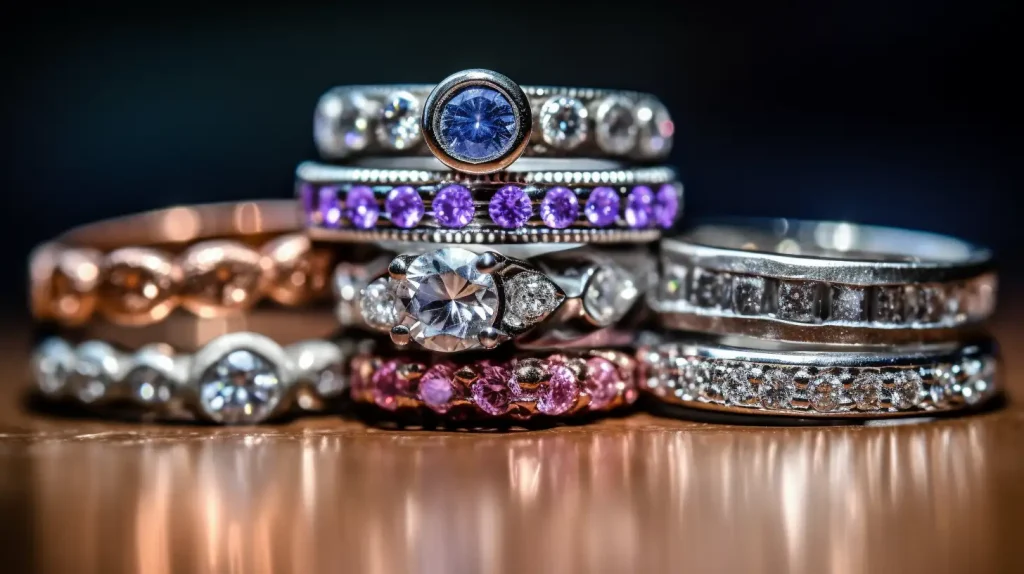
Understanding the Different Types of Gemstones and Metals
- Gold: This precious metal can vary in hardness and color depending on its carat. Higher carats mean more gold and less alloy, making it softer and more prone to scratching. Gold is generally safe to clean with mild soapy water, but always avoid harsh chemicals.
- Silver: Silver is a soft, white metal that can tarnish over time due to a chemical reaction with sulfur-containing substances in the air. Gentle soapy water can be used for cleaning, but heavily tarnished silver might require a special silver cleaner.
- Platinum: Known for its durability and resistance to tarnish, platinum is one of the safest metals to clean at home. It can withstand most cleaning methods without risk of damage. Still, sticking with mild soap and water is a good rule of thumb.
- Diamonds: As one of the hardest known materials, diamonds are resistant to scratching and can withstand more rigorous cleaning methods. However, they can attract grease, so regular cleaning with a gentle solution is recommended.
- Sapphires: Sapphires are hard and durable, but they can occasionally be treated with heat or chemicals to enhance their color. Therefore, it’s best to stick with mild soap and warm water for cleaning.
- Emeralds: These green gemstones are often treated with oil to reduce the visibility of their inclusions. They’re also relatively soft, making them susceptible to scratches. Avoid ultrasonic cleaners and harsh chemicals. Instead, opt for gentle cleaning with a soft cloth.
Understanding your ring’s composition is the foundation for its care. Knowing its particular characteristics and the cleaning methods they necessitate will help ensure your ring remains as beautiful and brilliant as the day it was slipped onto your finger.
Setting the Stage for Cleaning
Once you have become familiar with your ring’s unique characteristics, it’s time to roll up your sleeves and set up the perfect cleaning station. Here’s what you’ll need:
- A Soft, Lint-Free Cloth: This will be your trusty sidekick throughout the process. Not only will this cloth assist in drying your ring post-cleaning, but it will also serve to gently buff and bring out the shine in your ring. The ‘lint-free’ part is crucial – the last thing you want is tiny threads or lint sticking to your freshly cleaned ring.
- A Bowl of Warm Water: The warmth of the water helps to dissolve the oils and grime accumulated on your ring. However, it’s important to ensure the water is warm, not hot. Extreme temperatures can damage some gemstones or cause metal to expand and contract, possibly weakening the setting.
- Mild Dish Soap: This common household item is an unsung hero when it comes to ring cleaning. Its gentle, grease-fighting properties work wonders on the oils that cling to your ring. Remember to choose a soap free of any harsh chemicals, dyes, or fragrances that could potentially harm your ring.
- A Soft Toothbrush: This is the gentle hand that will scrub away the stubborn dirt lodged in the nooks and crannies of your ring. A child’s toothbrush or one with extra soft bristles works best. It’s strong enough to dislodge grime but soft enough to avoid scratching your ring.
Common Mistakes When Cleaning Your Wedding Ring at Home
As we discuss different methods of at-home ring cleaning, it’s important to talk about common pitfalls that could unintentionally harm your treasured ring.
- Using Harsh Chemicals: It may be tempting to grab that powerful household cleaner from under the sink, thinking it will do a better job. However, harsh chemicals like bleach or ammonia can damage your ring, especially if it features softer gemstones or delicate settings. Instead, opt for mild dish soap and warm water.
- Scrubbing Too Hard: The urge to scrub away stubborn grime can be strong, especially when you’re keen on restoring your ring’s original brilliance. However, excessive scrubbing can scratch softer metals and gemstones, and potentially loosen the settings. Instead, use a soft toothbrush and apply light pressure while cleaning.
- Not Drying Properly: After a thorough cleanse, it’s crucial to dry your ring properly. Leaving it to air dry or not patting it dry completely can leave water spots or cause metals to tarnish over time. Always use a soft, lint-free cloth to dry your ring thoroughly.
- Infrequent Cleaning: While it’s important not to overclean, letting dirt and grime build up on your ring over a long period can lead to dullness and potential damage. Regular light cleanings are better than infrequent, more aggressive ones.
- Not Consulting Professionals When Needed: Some rings, especially those with intricate designs, antique rings, or those with certain types of gemstones, require professional care. If you’re ever in doubt about the best cleaning method for your ring, it’s better to consult a professional jeweler.
Post-Cleaning Care
Once your ring has been delicately cleansed, it’s time for post-cleaning care. This stage is just as important as the actual cleaning, as it ensures your ring isn’t only clean but also well preserved for the days to come.
Begin by using your soft, lint-free cloth to dry your ring thoroughly. As you gently rub the cloth over the surface of the ring, pay close attention to the prongs and underneath the gemstone where water may hide. Leaving any moisture behind could lead to water spots or, over time, cause certain metals to tarnish. This step is about more than just drying; it’s about ensuring your ring is completely free of any residual cleaning solution or water.
After drying, inspect your ring closely under a good light. Look for any potential damage caused during the cleaning process or any loose stones that may need attention. Examine the shine of the metal and the gleam of the stone – is it radiating the sparkle you desired? If you notice any issues, it’s best to consult a professional jeweler who can properly assess and rectify the situation.
Lastly, take a moment to polish your ring. Gently buff the surface with your lint-free cloth, applying light pressure in a circular motion. This will enhance your ring’s shine and give it that final touch of brilliance.
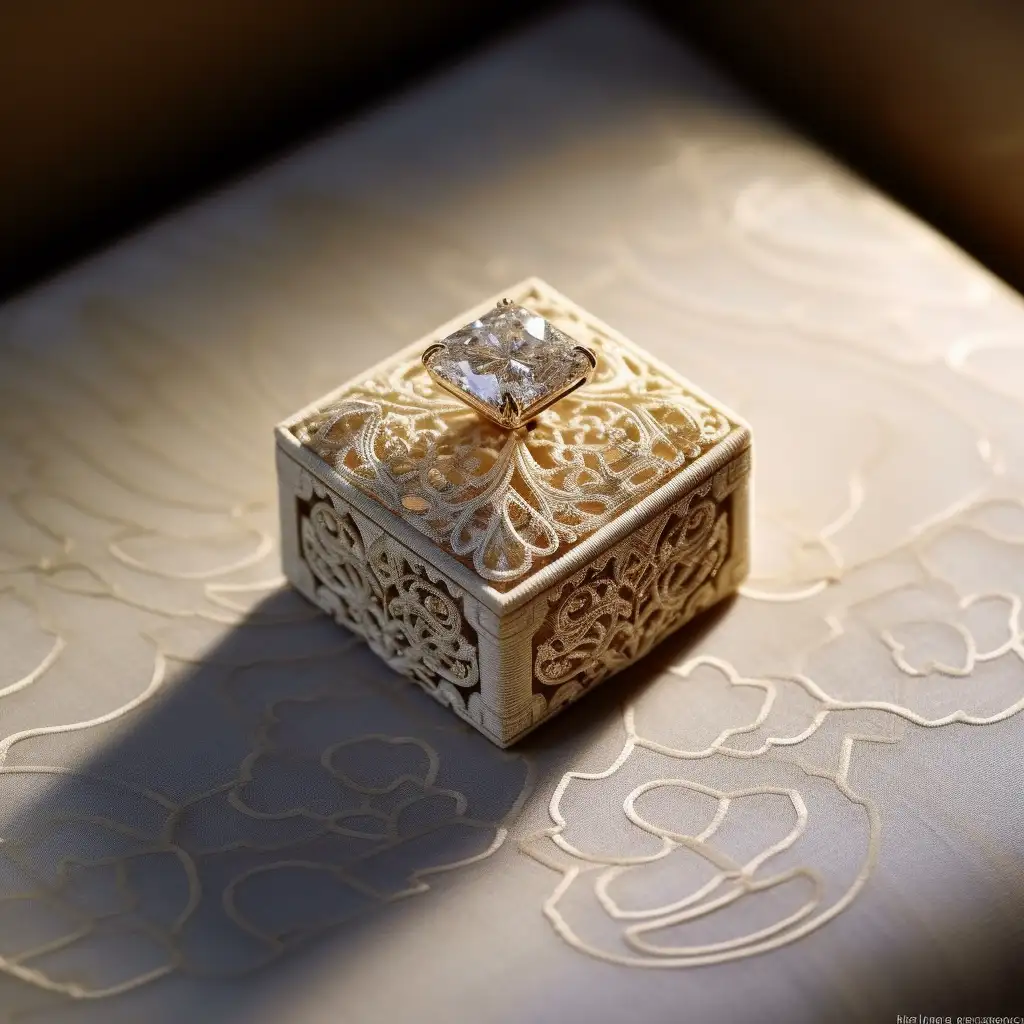
Preserving the Shine: Maintenance Tips
The journey towards preserving your ring’s shine is not a sprint; it’s a marathon. It demands consistent care, regular attention, and an understanding of the impact your unique lifestyle and occupation can have. Here’s how you can keep your ring sparkling with enduring brilliance.
- Regular Cleaning: Make it a habit to clean your ring every few weeks, or even more frequently if your ring is exposed to dirt or grime regularly. This routine ensures that grime and dirt don’t build up over time, maintaining your ring’s shine and preventing potential damage.
- Safe Storage: When you’re not wearing your ring, ensure it’s stored in a soft, dry place. Direct sunlight can fade some gemstones, and storing your ring alongside other jewelry pieces can lead to scratches. Choose a fabric-lined jewelry box or a soft pouch for safekeeping.
The Impact of Lifestyle and Occupation on Ring Maintenance
Your profession or hobbies can significantly influence the level of care your ring requires. For instance, if you work with your hands or engage in activities that expose your ring to harsh chemicals, dirt, or rough surfaces, you might need to clean your ring more frequently. Similarly, if your hobbies include gardening, baking, or anything that might cause grime to accumulate on your ring, consider a more regular cleaning routine.
How Often Should You Remove Your Ring?
There are certain activities during which it’s advisable to remove your ring to minimize the need for cleaning and reduce potential damage. This includes tasks such as cooking, cleaning, swimming, or working out. Chemicals, food particles, chlorine in pools, and sweat can dull your ring’s sparkle and even damage it over time. Being conscious of when to wear your ring and when to tuck it away safely can go a long way in preserving its shine and prolonging its life.
When to Consult the Professionals
Taking care of your precious ring at home is commendable, but there are situations where it’s best to leave the task to the experts. Knowing when to seek professional help is just as crucial as knowing how to clean your ring safely and effectively.
If your ring is heavily tarnished, contains loose stones, or is made from a particularly sensitive material, it’s advisable to seek a professional jeweler’s help. These experts possess specialized tools and techniques, like ultrasonic cleaners that can safely and effectively restore your ring’s brilliance without causing harm. Moreover, they can expertly assess your ring for any underlying issues that might escape the untrained eye, such as loose settings or minor cracks, ensuring your ring’s longevity.
Insuring Your Wedding Ring: A Necessary Safety Net?
In addition to routine maintenance and professional cleaning, you might consider insuring your wedding ring. This might seem unnecessary at first, but a wedding ring is more than just a piece of jewelry – it’s an investment, an heirloom, a symbol of commitment.
Insurance can provide a safety net in case of loss, theft, or significant damage. It might also affect decisions about home cleaning versus professional services. For instance, if your ring is insured, you may feel more comfortable choosing regular professional cleanings, knowing that any potential damage caused during the cleaning process would be covered.
However, before insuring, it’s important to understand the terms of the policy thoroughly. What does it cover? What proof is needed to make a claim? Are there any exclusions? Understanding these details will help you decide if ring insurance is the right choice for you.
Conclusion: How to Clean Your Wedding Ring at Home
Caring for your wedding ring is a small but meaningful way of honoring the love it represents. Regularly cleaning and maintaining it will help you to preserve not just its physical beauty, but also the cherished memories and promises it holds. Remember, each time you bring back its sparkle, you’re not just cleaning a piece of jewelry – you’re breathing life back into a symbol of your unique love story. So, the next time your ring seems a little less lustrous, you know exactly what to do.
Remember
If you have specific concerns about cleaning your wedding ring, it’s always best to consult a professional jeweler for personalized advice.
FAQs
Q: How often should I clean my wedding ring?
A: It’s recommended to clean your wedding ring at least once every two weeks to keep it looking its best.
Q: Can I clean all types of wedding rings at home?
A: Most wedding rings can be safely cleaned at home. However, certain materials like pearls, opals, or softer gemstones may require specialized cleaning methods. Consult the manufacturer’s instructions or seek professional advice for specific care instructions.
Q: Should I remove gemstones before cleaning?
A: It depends on the type of gemstone and its setting. If your ring has delicate or porous gemstones, it’s best to consult a professional jeweler for cleaning advice. In general, avoid exposing gemstones to harsh chemicals or prolonged soaking.
Q: Can I use ultrasonic cleaners at home?
A: Ultrasonic cleaners are effective for some types of jewelry but can be too harsh for certain gemstones or fragile settings. It’s recommended to consult a professional or check the manufacturer’s instructions before using an ultrasonic cleaner.
Q: How can I maintain my wedding ring’s shine between cleanings?
A: Avoid wearing your wedding ring while doing activities that may expose it to harsh chemicals or impact. Regularly wiping it with a soft cloth and storing it in a jewelry box or pouch can help maintain its shine.
Q: How can I remove stubborn dirt or grime from my wedding ring?
A: If you encounter stubborn dirt or grime, you can gently scrub the ring with a soft toothbrush and a mixture of warm water and mild dish soap. For intricate designs or hard-to-reach areas, consider using a jewelry cleaning brush with soft bristles.
Q: Can I use baking soda to clean my wedding ring?
A: While baking soda is known for its cleaning properties, it is not recommended for cleaning wedding rings. Baking soda can be abrasive and potentially damage the metal or gemstones.
Q: Can I use a steam cleaner to clean my wedding ring?
A: Using a steam cleaner can be effective for cleaning certain types of wedding rings, especially those without fragile gemstones or intricate settings. However, it’s important to ensure that your ring is compatible with a steam cleaner and to follow the manufacturer’s instructions carefully.
Q: How can I protect my wedding ring from getting tarnished?
A: To prevent tarnishing, remove your wedding ring when engaging in activities that may expose it to chemicals, such as cleaning or swimming. Store your ring in a separate jewelry box or pouch to prevent contact with other metals and consider periodic professional polishing to maintain its shine.
Q: Should I seek professional cleaning for my wedding ring?
A: If your wedding ring has intricate designs, delicate gemstones, or if you’re unsure about the appropriate cleaning method, it’s advisable to consult a professional jeweler. They can provide expert advice and professional cleaning services to ensure your ring is properly cared for.
Key Takeaways
- Create a soapy solution using warm water and mild dish soap or jewelry cleaner.
- Soak the ring in the solution for 15-20 minutes.
- Gently scrub the ring with a soft-bristle toothbrush.
- Rinse the ring thoroughly with water.
- Dry the ring with a soft, lint-free cloth.
- Understand the different types of gemstones and metals in your ring to determine the appropriate cleaning methods.
- Avoid using harsh chemicals or scrubbing too hard, as it can damage the ring.
- Properly dry the ring to prevent water spots and tarnish.
- Regularly clean your ring to prevent buildup of dirt and grime.
- Consider professional cleaning for delicate or intricate rings.
- Insure your wedding ring for protection against loss or damage.
- Seek professional advice when in doubt about cleaning methods.
- Take precautions based on your lifestyle and occupation to minimize potential damage to the ring.
- Remove the ring during activities that expose it to chemicals or impact.
- Consult a professional jeweler for heavily tarnished rings or those with loose stones.
- Understand the terms of ring insurance before opting for it.
- Regularly maintain and polish your ring to preserve its shine.
COPYRIGHT NOTICE
Please be advised that all images, designs, and creative content on this page are the exclusive property of TheIDoGuide.com and are protected under international copyright laws. The images may not be reproduced, copied, transmitted or manipulated without the written permission of TheIDoGuide.com.
Unauthorized use, distribution, display, or creation of derivative works of any images contained on this site, is strictly prohibited and can lead to legal penalties. We actively monitor for, and enforce, our copyright interests.
If you wish to use any of our images, kindly contact us to seek permission. Respect of copyright is not merely a legal requirement but also an acknowledgement and support of the hard work and creativity that goes into producing them.
Thank you for your understanding and cooperation.
© 2023, TheIDoGuide.com. All Rights Reserved.



